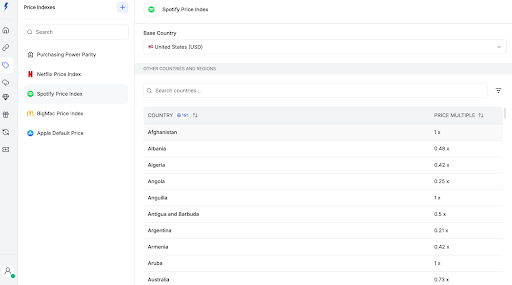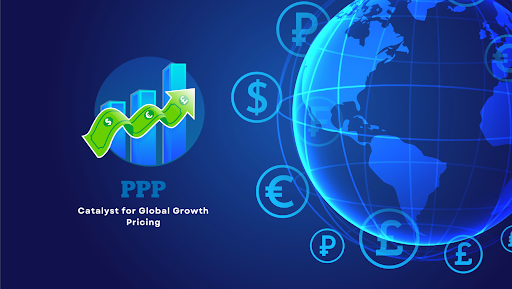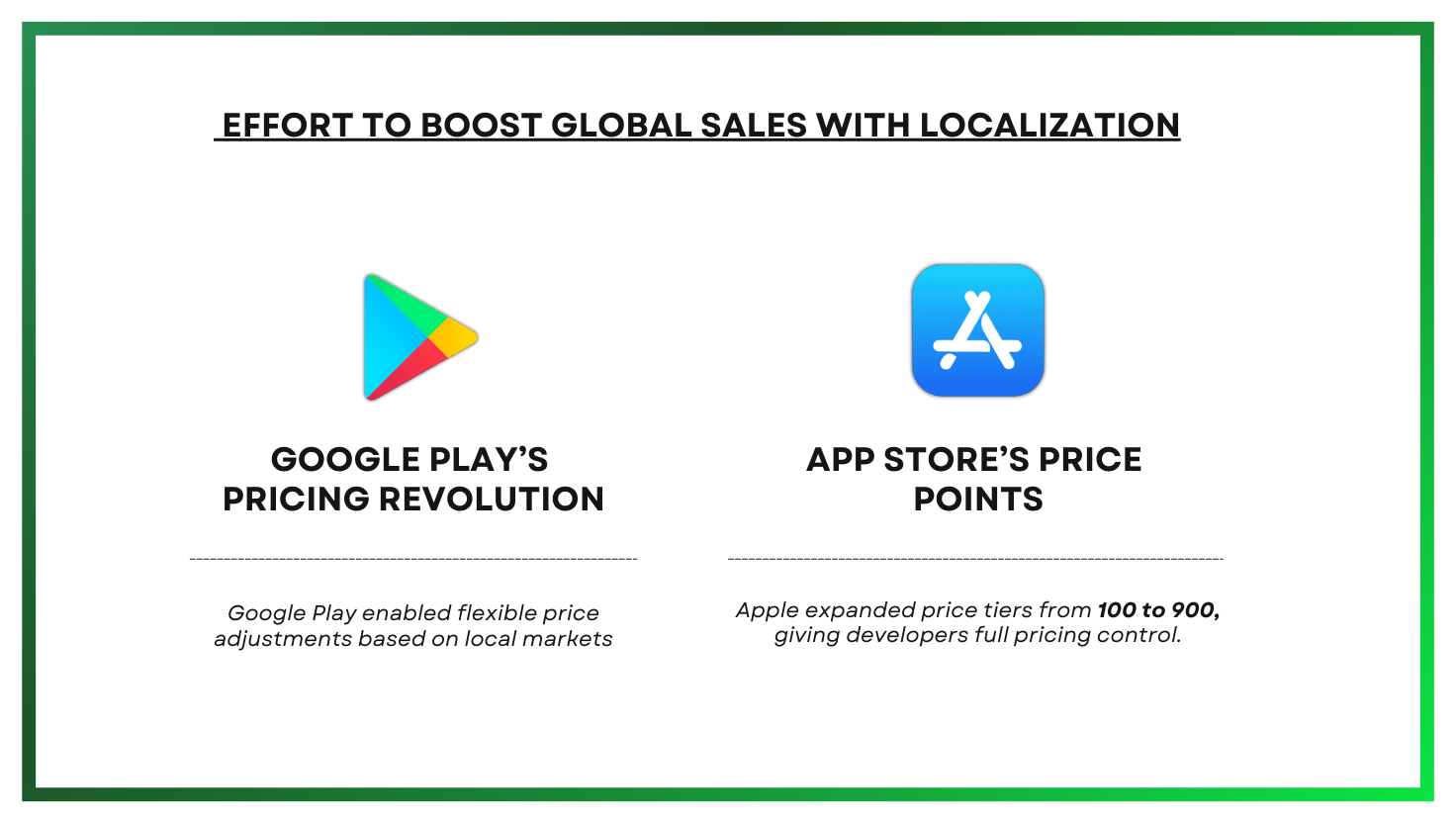The Spotify Pricing Index: How Global Music Streaming Found Its Pricing Rhythm?

Introduction
Spotify, the world’s leading music streaming platform, offers premium subscriptions in over 180 countries. However, a single price point doesn’t apply globally. Instead, Spotify uses a strategy known as differential pricing, where subscription prices vary based on factors such as local economic conditions, purchasing power, competition, and market potential. This approach is commonly referred to as the Spotify Pricing Index

The Birth of a Global Music Revolution
It was 2008 when Daniel Ek and Martin Lorentzon launched Spotify in Stockholm, Sweden. Little did they know their startup would transform how the world consumed music—and eventually pioneer a sophisticated global pricing strategy that businesses of all types would study and emulate.
"We had this crazy idea," Ek once recalled in an interview. "What if we could give people access to all the music in the world, instantly, for a reasonable price?”
That "reasonable price" would become one of Spotify's most fascinating business challenges. As the platform expanded beyond Sweden to the UK, then the US, and eventually to over 180 countries, a one-size-fits-all pricing model simply wouldn't work.
The $9.99 Problem
By 2011, Spotify had established its now-familiar premium subscription at $9.99 in the United States. The price point seemed magic—just under the psychological barrier of $10, comparable to a CD purchase each month, but unlocking a virtually infinite library of music.
But as the company expanded globally, this pricing strategy hit immediate roadblocks when entering new markets.
"When preparing to launch in markets like Brazil," one industry analyst noted, "a $9.99 price tag represented nearly 2% of the average monthly income there. In the US, it was less than 0.2%."
The company faced a dilemma: maintain pricing consistency or adapt to local economic realities?
An Unofficial Index Born From Observation
It's important to emphasize that what many refer to as the "Spotify Pricing Index" is not an official framework released or acknowledged by Spotify itself. The term emerged organically among business analysts, app developers, and technology journalists who observed and documented Spotify's variable pricing across markets.
"Spotify has never published their exact pricing methodology," explains a digital economy researcher. "What we call the 'Spotify Pricing Index' is a collective effort by the tech community to reverse-engineer their strategy by compiling subscription prices from various countries and analyzing the patterns."
These unofficial compilations appear on tech forums, developer blogs, and occasionally in business school case studies, curated from user reports, regional Spotify websites, and app store listings. Sites like spotify.wowgamr.ru (not affiliated with Spotify) have emerged specifically to track these global price variations.
The Local Solution to a Global Challenge
Despite its unofficial nature, the observed pricing strategy follows clear patterns that consider multiple factors beyond just exchange rates:
- Local purchasing power
- Competitive landscape
- Banking infrastructure and payment methods
- Piracy rates
- Consumer behavior patterns
In India, this approach led to a much lower price point of approximately $1.67 monthly for premium service—dramatically lower than Western markets but calibrated for Indian consumers.
The Price Map Reveals Its Pattern
As Spotify expanded, independent observers began documenting the fascinating pricing map that emerged across the globe:
- Highest tier: Denmark ($15.57), Switzerland, Norway
- Standard tier: United States ($10.99), Canada, Australia
- Mid-tier: Brazil ($4.92), Mexico, Thailand
- Entry tier: India ($1.67), Pakistan ($1.07), Argentina ($0.69)
These figures, compiled by independent analysts and often found on sites dedicated to tracking global subscription prices, show clear patterns aligned with economic development, competitive pressure, and strategic priorities, though Spotify has never confirmed the exact methodology behind these variations.
Crowdsourced Understanding
The community-driven nature of tracking Spotify's global pricing has led to fascinating collaborations. Online forums like Reddit's r/Spotify feature threads where users from different countries share their local premium prices, creating an informal but valuable dataset.
"We've been tracking Spotify prices across dozens of countries for years now," explains an analyst who runs a subscription pricing comparison website. "While we can't claim to know their internal formula, we've identified strong correlations between subscription prices and factors like GDP per capita, internet penetration rates, and local competition."
This crowdsourced approach to understanding Spotify's pricing strategy has its limitations. Prices change, promotional offers come and go, and currency fluctuations can distort the picture. Still, the overall pattern remains consistent: Spotify adapts pricing to local conditions in ways that many other global platforms don't.
The VPN Backlash
Not everyone appreciated this nuanced approach. Online forums soon filled with tutorials on using VPNs to subscribe through lower-priced regions.
"Why should I pay $15 when someone else pays $1 for the same songs?" became a common complaint.
Spotify responded with various technical measures to verify users' actual locations. But more importantly, they emphasized the importance of sustainable pricing across different markets. Additionally, tools like Surge Growth ensure VPN protection by default, helping streaming services detect and deter unauthorized regional pricing circumvention.
The Developer's Playbook
Tech entrepreneurs and app developers watched Spotify's strategy with keen interest. One meditation app founder studied the Spotify model closely before his global launch.
"What Spotify's approach taught us was profound," he shared. "We realized that rather than picking a single global price, we needed to understand the value perception in each market."
Using platforms like Surge Growth, he implemented a similar regional pricing approach:
- Dividing countries into tiers based on GDP per capita
- Testing different price points within each tier to find optimal conversion rates
- Implementing local payment methods to reduce friction
- Adjusting messaging to emphasize different value propositions in different regions
The results were transformative: "Our global subscriber base grew much faster than projected, with surprisingly strong revenue from regions we initially thought might be unprofitable."
Verifying the Unofficial Index
For developers seeking to implement similar strategies, verifying pricing data becomes crucial. Industry consultants recommend:
- Checking official Spotify websites in each region
- Consulting app store listings for different countries
- Utilizing subscription tracking services that provide regularly updated pricing data
- Building relationships with users in target markets who can provide real-time information
"The challenge with any unofficial index is accuracy," warns a pricing strategy consultant. "Spotify occasionally runs promotions or tests new price points in specific regions, which can create temporary distortions in the data. Always verify pricing information through multiple sources before making strategic decisions."
The Future Rhythm of Pricing
Today, observers continue tracking Spotify's pricing variations, noting experiments with:
- Family plans calibrated to local household structures
- Student discounts proportional to regional education costs
- Bundle partnerships with local telecommunications providers
For businesses following in Spotify's footsteps, the lesson is clear: in a truly global marketplace, pricing must be as diverse as the customers it serves.
The Harmony of Value
As we look to the future, Spotify's observed pricing innovation represents more than just a business strategy. It embodies a philosophy that digital services can find the sweet spot between accessibility and sustainability, between global reach and local relevance.
For app developers, SaaS providers, and digital content creators, the unofficial Spotify Pricing Index offers a powerful template: listen to your markets as carefully as Spotify listeners enjoy their music.
The result is a beautiful harmony—a business model that grows not despite price differences, but because of them.
In the end, perhaps that's Spotify's most valuable contribution to the business world: proving that when you get the price right for each listener, everyone can enjoy the music, even if the exact formula remains Spotify's closely guarded secret.
Benefits and Criticisms
While this strategy boosts global accessibility, it also faces criticism from users who believe it's unfair for them to pay more than others for the same service. However, Spotify argues that without regional pricing, the service would remain inaccessible to millions of potential users worldwide.
Why Regional Pricing Makes Economic Sense
- Income Disparity Reality: Income levels vary dramatically across global markets, with purchasing power differing significantly between developed and developing nations.
- Market-Based Approach: Physical products have consistently implemented location-based pricing models, with everyday items costing a fraction in emerging markets compared to developed ones.
- Digital Inclusion Strategy: Regional pricing enables broader access to technologies and services across socioeconomic boundaries.
- Economic Accessibility: Without adjusted pricing structures, premium digital services would remain exclusive to wealthy nations, perpetuating technological inequality.
- Global Market Expansion: This pricing model allows companies to reach previously untapped consumer segments while maintaining sustainable revenue growth.
Regional pricing represents a practical solution that acknowledges economic realities while expanding market reach, ultimately creating more equitable access to digital services worldwide.
How Surge Growth Can Help
With Surge Growth, consumer apps can localize their pricing using the Spotify Index with just a few clicks. No developer or integration required. SurgeGrowth also updates the indexes every month to ensure they reflect changes in prices made by Spotify. This approach helps businesses implement regional pricing strategies based on established market research.
The Spotify Index is one of the popular indices available on the Surge Growth platform, alongside others like the Big Mac Index. Users can also create their custom indexes to meet specific business requirements and market conditions.




